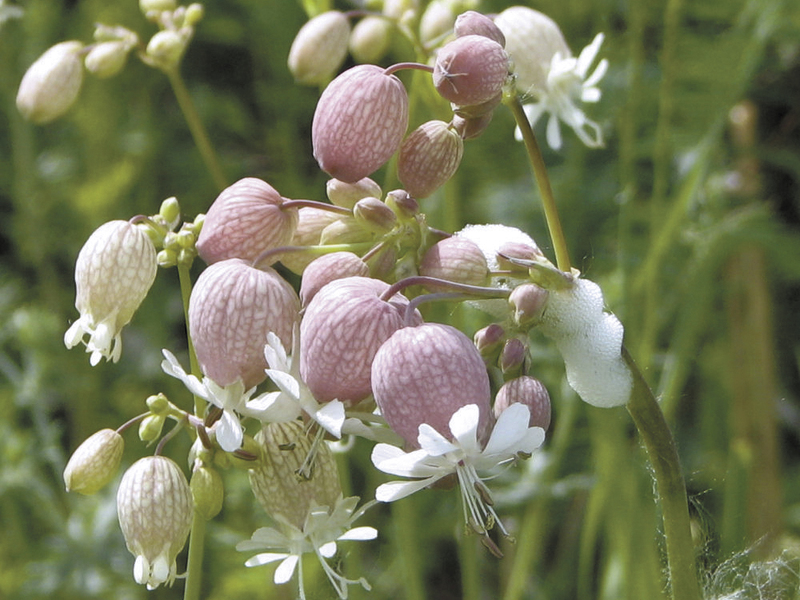Ask an American child to draw a picture of a house and she will probably draw a box with windows. Houses are, after all, square. Ask an African child in the bush to draw a house, and he will probably draw a cone or circle because his house is round, not square. Just when we think we know everything in the garden we find that there is a new plant that is different from the usual, and even stranger, this plant has been known to many but unheard of here at home.
The herb Sculpit (Silene inflata) is an Italian green that is unknown to most Italians.
Often called stridolo, it has long, thin lance-like leaves that can be chopped and added to egg dishes, risotto, salads, soups, and even pizza. Its delicate, yet distinctive flavor seems to combine the flavors of tarragon, chicory and rocket. But this quiet charmer has a bonus of fantastic flowers complete with pink oval balloons or bladders, fringed with delicate white petals.
These fantastic flower pouches drive pollinators wild, and you can spend a sunny day watching bees climb in and out of the blooms, often disappearing completely inside the flower, only to emerge covered in pollen. The blooms add an exotic touch to mixed flower bouquets. It is a real charmer. Indeed, the Italian town of Galeata has a festival every April celebrating this quiet herb.
Like most herbs, sculpit is easy to grow. It does best in full sun, and actually prefers poor soil. Like many plants, too rich a soil may cause lots of greens but no flowers. Not to worry if your garden soil is deep rich compost, because you grow this herb for its leaves, not its blossoms.
Sow sculpit seeds directly in the garden after danger of frost has passed and the soil has warmed up in the spring. Plant the tiny seeds just one-half inch deep, then thin so the plants are at least four inches apart.
Use the tiny plants that you pull out as whole additions to salads or stir fries. It is pretty enough to tuck into a flowerbed or pot up as a nice potted plant.
You can cut the leaves at any stage, and the plant will quickly regrow them. Seeds are available from specialty nurserymen such as Seeds of Italy (www.growitalian.com).
Sculpit really shines when added to risotto. The delicate, light taste of sculpit tinges each grain of risotto with just enough of a mild taste to enhance the risotto without overwhelming it.
It marries well with almost any egg dish so toss some into scrambled eggs and quiche. Chopped fine it can be sprinkled fresh over pasta. However you use it, sculpit reminds us that not everyone has the same world view as us. Sculpit for seasoning and sculpit flowers for entertainment. If we are what we eat then perhaps it is time to be adventurous and eat adventurous.
Not every house is square and not every herb is strong.






















































